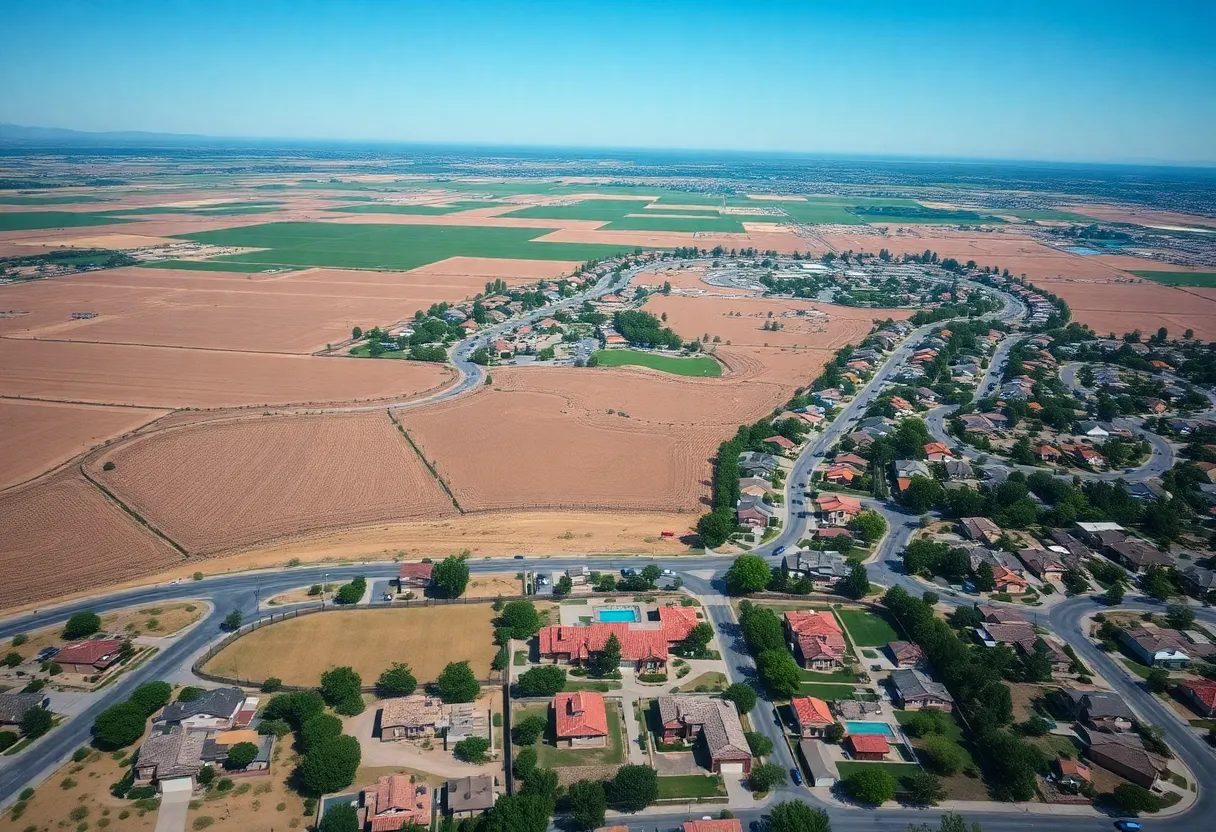News Summary
Governor Katie Hobbs has signed Senate Bill 1611 to allow farmers in central Arizona to sell agricultural land and groundwater rights to developers. This legislation aims to address the housing shortage while promoting sustainable growth by enabling the conversion of farmland into urban neighborhoods. The law imposes limits on future water usage from these lands, reflecting a response to a housing crisis and ongoing water resource management challenges in the state.
Phoenix, Arizona – Governor Katie Hobbs has signed a landmark bill, known as Senate Bill 1611, which aims to convert farmland into urban neighborhoods as a strategy to conserve water and address the ongoing housing shortage in the state. The new law allows farmers in central Arizona to sell their agricultural land and groundwater rights to developers while imposing limits on future water usage from these lands.
The passage of this legislation aligns with the growing need for sustainable growth in Arizona, especially in light of recent moratoriums on new certificates for 100-year assured water supplies. This moratorium, initiated in 2023 by the Arizona Department of Water Resources, was prompted by concerns over insufficient groundwater assessments. As a result, development projects in areas such as Buckeye and Queen Creek have faced delays, raising concerns among homebuilders about housing availability in a state grappling with a housing crisis.
Senate Bill 1611 specifically targets the Phoenix and Pinal Active Management Areas (AMAs), with the potential for future expansion to the Tucson AMA if a similar moratorium on developments takes place there. The law is expected to facilitate the growth needed to create jobs and help reduce the cost of new homes in a state where numerous families struggle to find affordable housing.
One of the primary goals of the legislation is to aid housing developers by allowing them to utilize reallocated water from former farmland. The new law permits farmers to give up their groundwater rights if their land has been used for irrigation most of the past five years. This measure will enable developers to apply these water credits towards assured water supply requirements, smoothing the path for new housing projects.
Under the stipulations of SB 1611, the maximum allowable water usage is set to 1.5 acre-feet per acre for the Phoenix AMA and 1 acre-foot per acre for the Pinal AMA. Currently, agricultural lands in these regions are consuming approximately three times the new allowed limits, highlighting the legislative effort to curtail excessive water usage. To put this into perspective, an acre-foot of water is equivalent to about 326,000 gallons, which could sustain approximately three homes for an entire year.
The legislation garnered bipartisan support in the state legislature, passing the Senate with a vote of 26-4 and the House with a margin of 35-20. However, skepticism regarding the potential long-term consequences of the bill remains. Critics have raised red flags concerning the possibility of inadequate groundwater replenishment under the new urban development requirements, particularly as demand for water resources continues to grow for both agricultural and urban use.
Some legislators have expressed concerns about the added strain on the Central Arizona Groundwater Replenishment District (CAGRD), which is already managing a challenging water supply landscape. Critics warn that the shift from farmland to urban land, while attractive for addressing housing needs, could exacerbate existing vulnerabilities in Arizona’s water management systems.
Despite these concerns, supporters of the legislation argue that it represents a significant step toward balancing water conservation and housing supply issues. Modifications to the bill were made to ensure that only agricultural land that has a history of irrigation can be converted to urban use, with measures in place to minimize additional pressure on available water supplies.
In summary, Arizona’s SB 1611 is positioned as a pivotal legislation that could have widespread implications for the future of both agricultural practices and urban development across the state. With the potential to convert hundreds of thousands of acres of farmland and significant proactive water management initiatives, this law embodies a crucial intersection of development, conservation, and community growth, paving the way for a sustainable future in Arizona.
Deeper Dive: News & Info About This Topic
HERE Resources
Phoenix’s Transformation: A Flourishing Urban Landscape
Scottsdale Sees Increase in Homeless Population
Arizona’s Prison System Faces Crisis Amid Violence and Shortages
Rising Eviction Rates in Phoenix Raise Alarm
DCS Halts Operations at We Care Homes Amid Child Neglect Claims
Tucson’s Tiny Home Village Addresses Homelessness Crisis
Phoenix City Council Approves Controversial $4.8 Billion Budget
Violent Inmate Fight Raises Safety Concerns in Tucson Prison
Phoenix City Council Votes on $2.2 Billion Budget Proposal
Phoenix Housing Market Reaches Record Inventory Levels
Additional Resources
- Courthouse News: Arizona Approves AG to Urban Water Conservation Plan
- Wikipedia: Water conservation
- Arizona Capitol Times: AG to Urban Clears Legislature
- Google Search: Arizona water conservation
- AZ Central: Arizona Senate Passes AG to Urban Water Bill
- Google Scholar: Arizona water management
- Arizona Mirror: Arizona’s Water Shortage
- Encyclopedia Britannica: Water management
- The Center Square: Arizona Water Policy
- Google News: Arizona housing shortage

Author: STAFF HERE PHOENIX WRITER
The PHOENIX STAFF WRITER represents the experienced team at HEREPhoenix.com, your go-to source for actionable local news and information in Phoenix, Maricopa County, and beyond. Specializing in "news you can use," we cover essential topics like product reviews for personal and business needs, local business directories, politics, real estate trends, neighborhood insights, and state news affecting the area—with deep expertise drawn from years of dedicated reporting and strong community input, including local press releases and business updates. We deliver top reporting on high-value events such as the Waste Management Phoenix Open, Cactus League Spring Training, and Arizona State Fair. Our coverage extends to key organizations like the Greater Phoenix Chamber of Commerce and Visit Phoenix, plus leading businesses in technology and healthcare that power the local economy such as Intel and Banner Health. As part of the broader HERE network, including HERETucson.com, we provide comprehensive, credible insights into Arizona's dynamic landscape.





